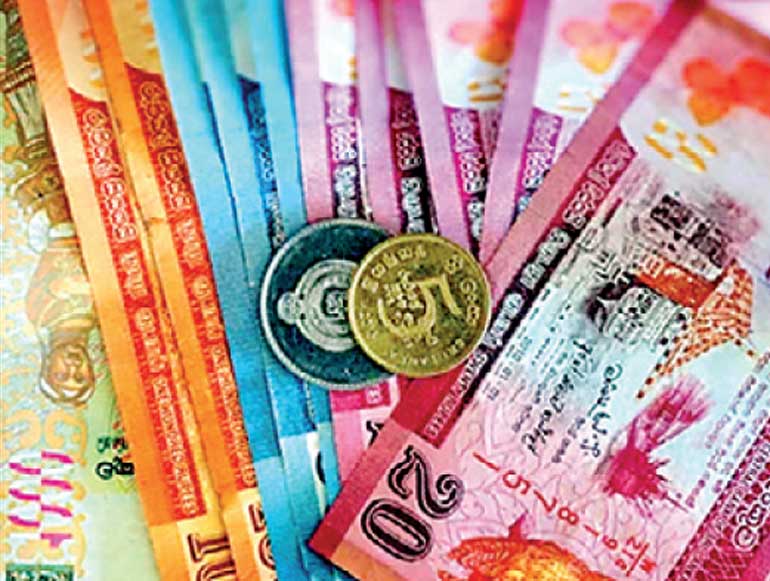Monday Apr 07, 2025
Monday Apr 07, 2025
Thursday, 2 March 2023 02:03 - - {{hitsCtrl.values.hits}}

NDB Securities forecasts rupee is likely to further appreciate in the near term following the recent spike.
In a research note it said yesterday that USD/LKR has appreciated by 0.9% since 23 February 2023.
Analysing reasons for this development, NDB Securities (NDBS) said the average daily volume in the interbank FX market is now at $ 42 million vs. $ 8-10 million in the initial days of the crisis (May/June 2022). In February 2018, this used to be around $ 50 million, NDBS recalled.
It also said that the Central Bank (CBSL) has been a net buyer from the FX market in the last three months from $ 6 million in November to $ 104 million in December and $ 211 million in January.
The CBSL also reduced the surrender requirement for export proceeds on 27 February 2023.
“This further strengthens the FX market liquidity,” NDBS said.
CBSL also reduced the export proceeds surrender requirement to 15% from the previous 25%.
On 27 February, the CBSL expanded the daily trading band to +/- LKR 5.00 of the middle spot exchange rate. This used to be +/- LKR 2.60 before.
NDBS said as per its channel checks, banks are flushed with FX liquidity.
Some of the contributory reasons for this according to NDBS were FX conversion by exporters in anticipation of a further appreciation of the LKR; a drop in importer demand (due to a decline in real sector economic activities and import restrictions); and a decline in Current Account Deficit (CAD).
NDBS said the decline in CAD is due to multiple reasons. One was the dwindling trade balance (due to import restrictions, and a slowdown in the real sector). In January 2023, the trade deficit halved YoY to $ 410 million.
Another is the increase in tourism inflows and remittance flows. In January 2023, the former increased by 7%, and the latter rose by 69% - YoY. “The financial account gets a breather from the non-repayment of external obligations,” NDBS added.
In terms of portfolio flows, it said last week saw Rs. 7 billion net foreign inflow to the G-Sec market.
“This could be due to foreign investors now being of the view that currency risk is largely behind us,” it said. Additionally, the YTD net foreign inflow to the equity market was Rs. 3.2 billion vs. Rs. 3.1 billion net outflow a year ago.
In backing its outlook of a likely further appreciation of the Rupee, NDBS said a further improvement in the Current Account Deficit is likely due to a decline in the trade deficit (a function of real sector slowdown to a greater extent), and a healthy increase in tourism inflows and remittance flows.
“The IMF Extended Fund Facility (EFF) also appears close,” it said adding that “While we don’t expect a direct improvement in the interbank FX liquidity due to the receipt of the first tranche of the EFF (CBSL could use this to shore up reserves), inking the deal would be a vote of confidence for investors, resulting in higher portfolio inflows.”
Additionally, NDBS said having an IMF program usually leads to a ‘catalytic effect’. This means an increase in capital flows to the recipient country, especially from Multilateral Development Banks (MDBs), the NDBS added.
Discover Kapruka, the leading online shopping platform in Sri Lanka, where you can conveniently send Gifts and Flowers to your loved ones for any event including Valentine ’s Day. Explore a wide range of popular Shopping Categories on Kapruka, including Toys, Groceries, Electronics, Birthday Cakes, Fruits, Chocolates, Flower Bouquets, Clothing, Watches, Lingerie, Gift Sets and Jewellery. Also if you’re interested in selling with Kapruka, Partner Central by Kapruka is the best solution to start with. Moreover, through Kapruka Global Shop, you can also enjoy the convenience of purchasing products from renowned platforms like Amazon and eBay and have them delivered to Sri Lanka.
Discover Kapruka, the leading online shopping platform in Sri Lanka, where you can conveniently send Gifts and Flowers to your loved ones for any event including Valentine ’s Day. Explore a wide range of popular Shopping Categories on Kapruka, including Toys, Groceries, Electronics, Birthday Cakes, Fruits, Chocolates, Flower Bouquets, Clothing, Watches, Lingerie, Gift Sets and Jewellery. Also if you’re interested in selling with Kapruka, Partner Central by Kapruka is the best solution to start with. Moreover, through Kapruka Global Shop, you can also enjoy the convenience of purchasing products from renowned platforms like Amazon and eBay and have them delivered to Sri Lanka.